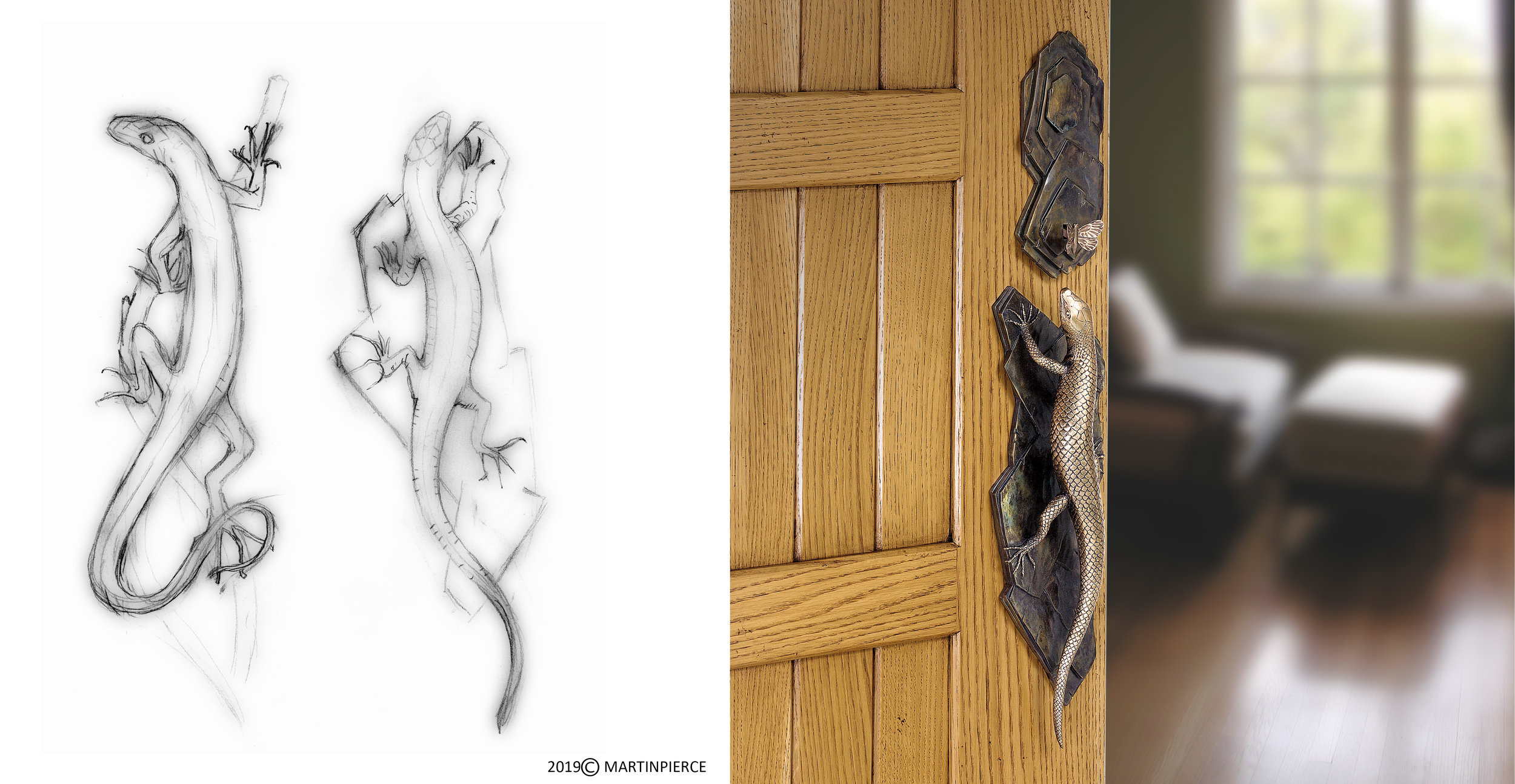The technique of Japanning is one we used extensively as furniture makers to adorn our case-goods with natural themes. We have also used this technique to create an animal carnival on a commissioned toy chest and more recently to create smaller scarab wall tiles which will soon be available for purchase.
In the scarabs depicted in our wall tiles the body shape is based on the gymnetis family of beetle. This class of beetle has large wing casings which provide a prefect natural canvas for bright iridescent colors.
For our ongoing home remodel we will be using the scarab tiles to add an artistic touch to our front door where 18 tiles will be laminated to the 18 raised door panels. We have chosen 5 distinct bugs ranging from the round from of the lady bird to the elongated shape of the buprestid and will be using an abundance of artistic license to paint them in a variety of colors.
The beetle shapes will be cut from 1/8” Masonite and then built up with a thin layer of casein to form a smooth surface which will be gilt with gold leaf. The gold leaf once sealed will provide the backdrop for the beetles markings which be created with oil paint diluted with a solvent to create a thin translucent color. Once applied the oil paint will be sealed with lacquer so that successive layers of color can be added. As the layers of color are heavily diluted the lustrous gold shines through to create an attractive iridescence albeit one that is vastly inferior to that seen in nature.













